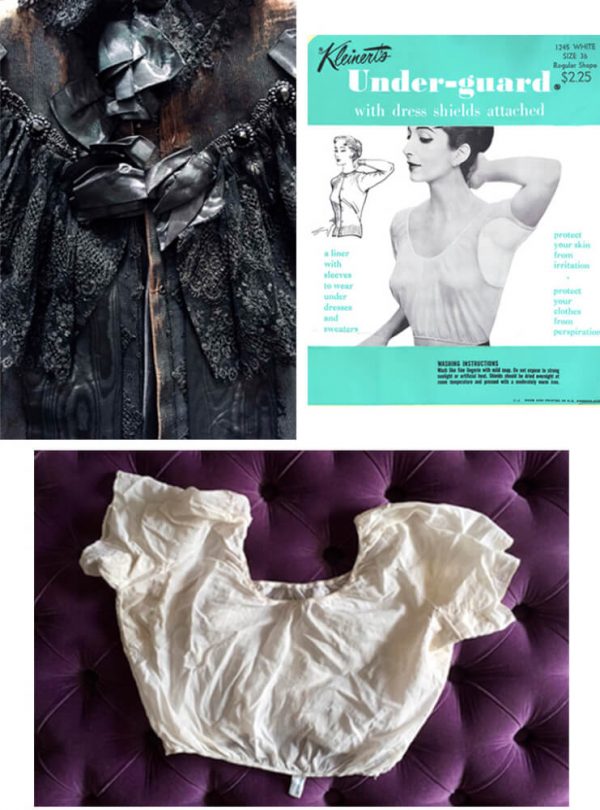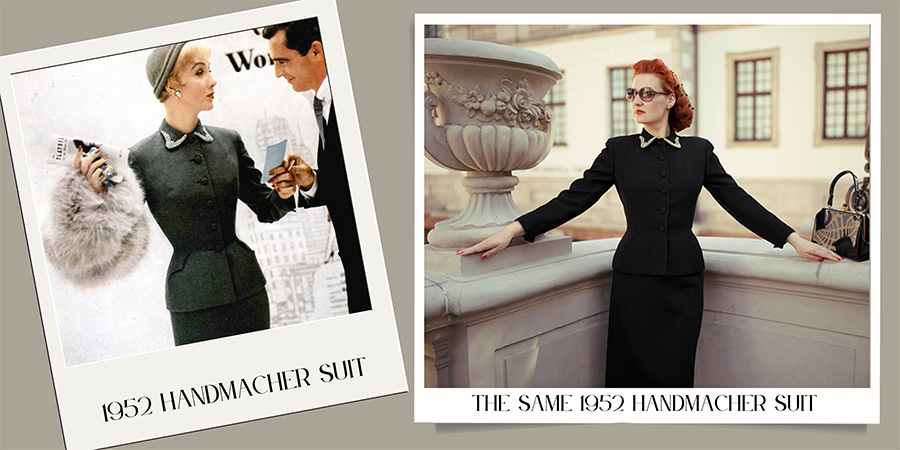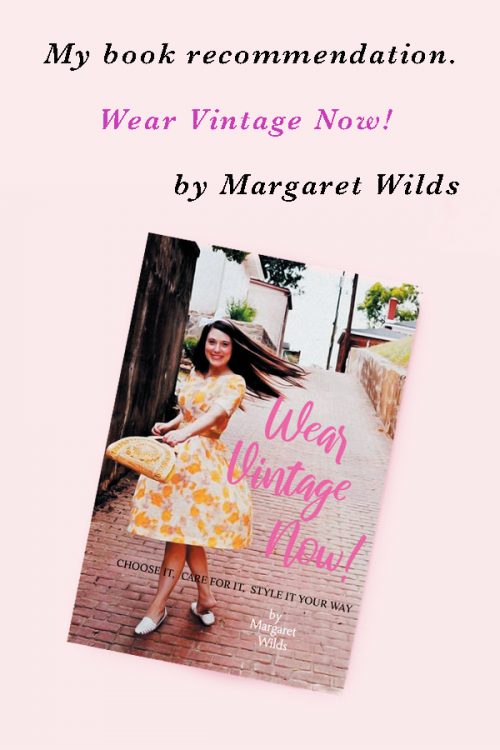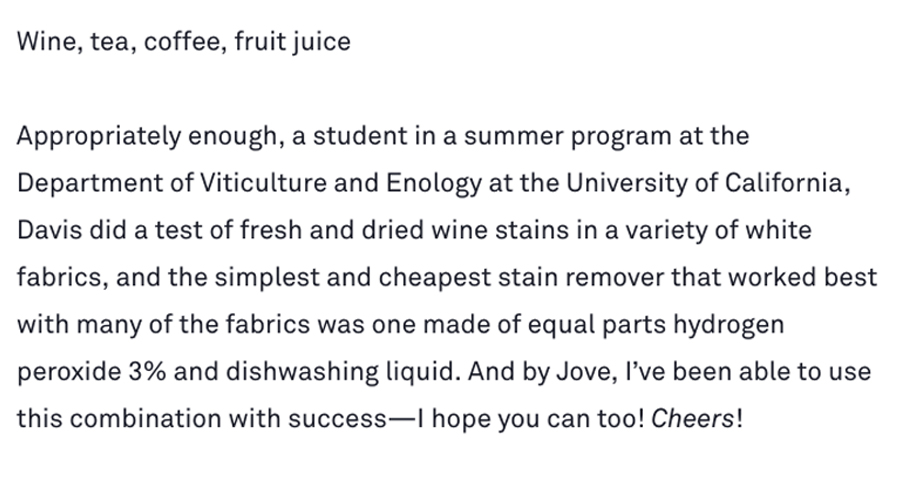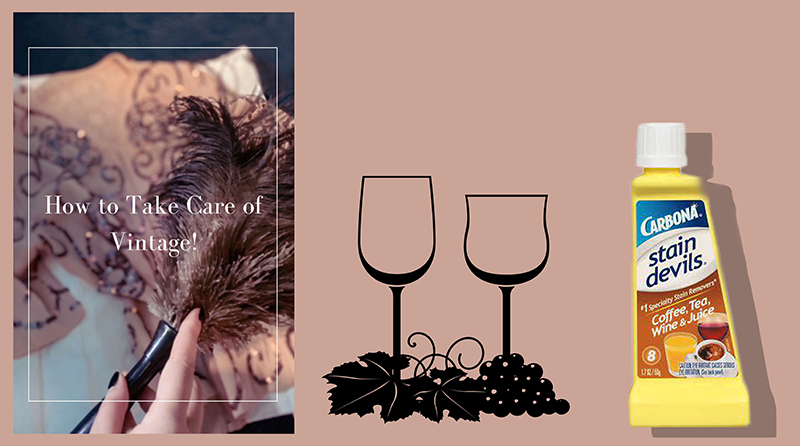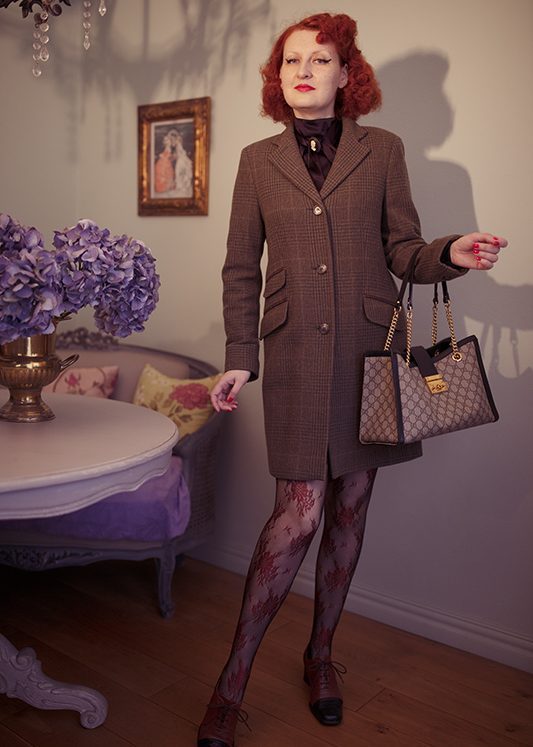How to Wash Vintage Clothes Like a Pro
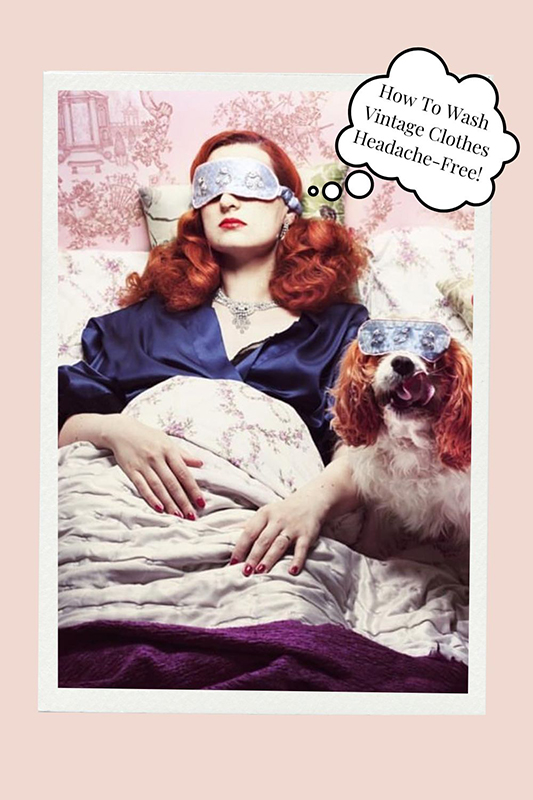
Last updated on May 25th, 2024 at 07:50 pm
- How to Wash Vintage Clothes – In a Nutshell
- Beginner’s Guide to Washing Vintage Clothing
- Expert Tips For Cleaning Vintage Clothes
- Understanding Vintage Fabric
- Handwashing Vintage Clothes Step-by-Step Instructions
- Best Detergent for Handwashing Vintage Clothes
- How to Wash Vintage Lingerie
- How to Remove Stains From Vintage Clothes
- How to Get Rid of Odour in Vintage Clothes
If you want to ensure that your vintage clothes remain in excellent condition, it is crucial to clean them properly. One of the best ways to do this is to hand-wash them using a delicate detergent. This method is not only gentle on the fabric but also ensures that the colours don’t fade and the fabric doesn’t shrink.
It is recommended to wash each item separately, even if the label on the vintage clothing suggests that it can be machine washed. This is because the agitation and high temperatures of a washing machine can cause damage to the delicate fibres of vintage clothing.
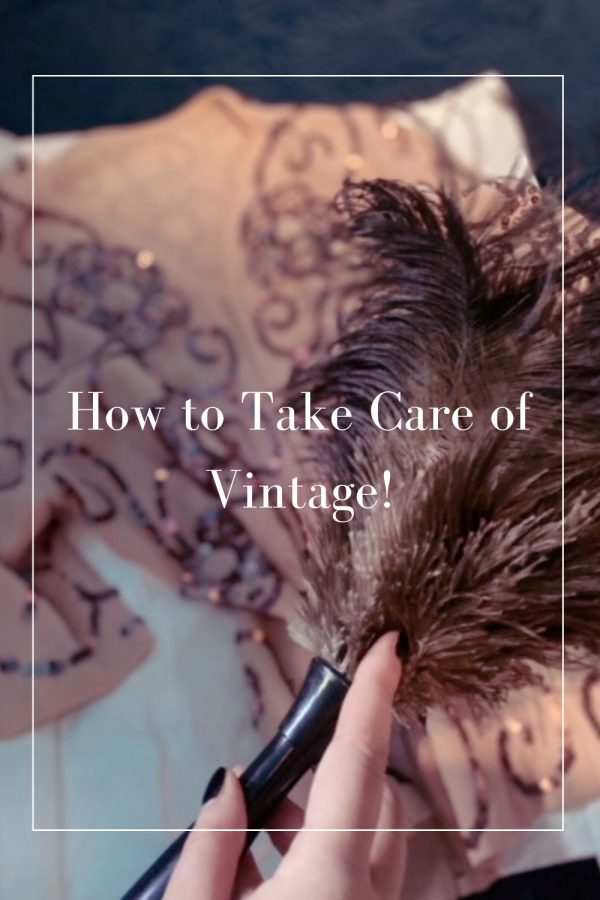
In this article, you’ll discover the secrets of washing vintage clothes like a pro. You’ll also learn how to remove yellow stains and red wine spots from your precious vintage garments. Additionally, you’ll find out which vintage fabrics can and can’t be hand-washed, and what detergent is best suited for vintage delicates. I’ll share my tips on how to clean vintage clothes with precision and care so that you don’t cause any damage to the fabric.
How to Wash Vintage Clothes – In a Nutshell
Remember these helpful tips for washing vintage clothes:
- Check the Label: Look for care instructions on the clothing label to determine the best cleaning method. Please note, that before 1971, care tags on vintage clothes were not mandatory.
- Colour Bleed: You should always check for a colour bleed before you immerse washable clothes in water. [Keep reading to find out how to do it without causing any damage to the fabric.]
- Spot Treat Stains: Gently dab stain remover (homemade remedies) on any stains before washing. I discuss this in detail further in the article.
- Turn Garments Inside Out: Protect delicate prints and fabrics by turning clothes inside out before washing. Apply this rule to vintage clothes that can be washed in a washing machine, although I always advocate hand washing!
- Select Gentle Cycle: Use a gentle cycle on your washing machine to prevent damage to vintage fabrics. I would never machine was anything made before the 1970s.
- Use Tepid Water: Hand wash vintage clothes in tepid water to preserve colours and prevent shrinking.
- Choose Mild Detergent: Opt for a gentle detergent to clean without harsh chemicals and the need for rinsing to save water. I only ever use one particular washing liquid for all my vintage and lingerie pieces. [Keep reading to find out what it is and how to use it]
- Air Dry: Hang vintage clothes to air dry instead of using a dryer to prevent shrinking and fading.
- Iron Carefully: Use a low heat setting and iron inside out to avoid damaging delicate vintage fabrics. Never use iron on vintage clothes embellished with sequins or beads. Gelatin sequins on the 1920s and 1930s clothes will melt if you expose them to water or heat.
- Store Properly: Keep vintage clothes in a cool, dark, and dry place preferably in Tyvek covers.

If you are new to the It’s Beyond My Control blog, welcome!
Most of my clothes (about 95%) are from the 1930s to the late 1950s and need special care when it comes to washing, cleaning and storing. You can, of course, apply all the tips presented in this article to clothes made much later.

RELATED ARTICLE
HOW TO DATE VINTAGE CLOTHES
If you are not sure about the age of your vintage garment, and there are no care tags attached, take a look at the in-depth article I wrote about dating vintage clothes.
DISCLOSURE; As of October 2021 (one year after I published this article), I’m part of an affiliate program and I get a commission for purchases made through some of the links in this post. When you buy a product via the link in my post, you are helping to keep my website alive for which I’m very grateful!
Beginner’s Guide to Washing Vintage Clothing
Washing vintage clothes can be a challenging task, but it is essential to preserve their quality and longevity. To ensure that your vintage garments remain in optimal condition, it is crucial to adhere to proper cleaning techniques. Please, be very careful when implementing any of the tips provided in this article. If you are not 100% sure about the content of the fabric in your garment, speak to an experienced dry cleaner.

Proceed With Caution When Washing Vintage Clothes
Expert Tips For Cleaning Vintage Clothes
Expert tips for washing vintage clothes.
- Can I hand wash all vintage clothes? No! There are vintage fabrics that should never come into contact with water because of a high possibility of shrinkage or fabric bleed. If you hand wash a crepe-textured vintage garment or wool, it might survive the bath but it will only fit a child. Same with Cashmere. However, the latter can be reshaped with a soak in cold water and a few tablespoons of hair conditioner. I managed to reshape the 1940s CC41 rayon dress with the help of a cheap drugstore hair conditioner.

- Is it 100% safe to send vintage clothes to the dry cleaner? The simple answer is, no. It would be best if you only used a dry cleaner experienced in handling vintage and antique clothes. And even that’s not a guarantee that your vintage garment won’t be damaged in the process. Antique and vintage silk might shatter or deteriorate over time. It might be because of the quality of the fabric, dry rot or bad storage practices.

Fabric shrinkage and bleeding are the two main catastrophes that may occur when washing & drying vintage clothes the wrong way.
NEVER WASH VINTAGE SEQUINS
Never use water on vintage velvet, moire pattern, crepe or sequins ( especially if they are made of gelatine), because they will melt! Sequins can also be damaged during dry-cleaning so my advice would be NOT to clean any garment embellished with sequins. Spot cleaning is the only option.
COLOUR BLEED MIGHT OCCUR WHEN WASHIN VINTAGE FABRIC
•Use a wet Q-tip and rub the colours you want to test for bleed. If the colour transfer occurs do NOT immerse the garment in the water!
I’m always extremely careful when hand-washing vintage but mistakes happen, even to me.
Once, I didn’t think to do a test on the label attached to my 1950s dress and of course, a bleed occurred. Luckily, only the inner side of the white collar suffered from the red tag attack.
I took a close-up picture of the damage to show you what happens when you don’t ‘think pink’ when washing white clothes with a red tag.

Understanding Vintage Fabric
Different fabrics require different care and cleaning methods to ensure the longevity of the garment. By familiarizing yourself with the various fabric types commonly found in vintage clothing, you can better preserve and care for your treasured pieces.
Can I wash vintage clothes in a washing machine?

- If your garment is from the 1970s or later it will definitely have a care label unless it fell off. Vintage fabrics from the 70s and the 80s that can be machine-washed on a delicate wash cycle.
- Pure Vintage polyester (my most hated fabric!) can be machine-washed.
- Pure vintage linen- you can try machine washing on a very delicate cycle but as is the case with cotton, shrinkage may occur.
- Cotton can be washed in warm but not hot water.
PRO TIPS FOR WASHING VINTAGE CLOTHES
Please note that there is always the risk that a print on vintage fabric might fade if you wash it in a washing machine and there is always the risk of shrinkage.
I strongly advise that you always choose to hand wash your vintage clothes over machine washing, even if the latter is acceptable. Why risk accidental damage? You will prolong the life of your precious clothes by caring for them the proper way.
I always place the new-to-me vintage garments made of wool in the freezer for at least 24-48 hours to avoid the risk of a moth infestation!

RELATED ARTICLE
For the purpose of giving my readers the best advice on storing vintage, I interviewed a textile conservator with over twenty-five years of experience in handling antique textiles in museums.
I hope that the article will help answer all your questions regarding the dos and don’ts when it comes to storing vintage clothes the proper way.
Handwashing Vintage Clothes Step-by-Step Instructions

How to handwash vintage clothes? Steps for hand washing vintage clothes like a pro:
- Hand wash one vintage item at a time!
- Before you immerse vintage clothes in water, always follow my recommendation for checking for colour bleed (instruction above) and possible shrinkage.
- You should always hand-wash vintage clothes in a clean sink because you don’t want dirt or possible grease to transfer onto your clothes.
- Never Wash Vintage Clothes in Hot Water.
- Remember, only ever wash delicate vintage garments in tepid water. And for the love of all vintage, fill the sink with water before you put your clothes in it. I can’t stress this enough, don’t risk placing your vintage garment under running water or you may cause damage to the fabric!
- Vintage fabrics that can be hand-washed are; cotton, rayon, pure silk and pure wool, although I always send my woollen garments to the dry cleaner.
- Metal can rust in water and some of the vintage sellers I know do as far as removing the zipper beforehand. I don’t go to that extreme but be aware that this may happen.
- Consider removing buttons.
To wash vintage clothes like a pro use my favourite detergent for the job, Eucalan, a gentle and all-natural formula that won’t harm your precious vintage garments.
- To use Eucalan, start by filling a basin with lukewarm water. Add half a cup of the detergent, choosing your favourite scent (I personally recommend jasmine for a lovely floral fragrance or lavender for its moth-repelling properties).
- Place your vintage clothes in the basin and let them soak for 15 minutes, allowing the detergent to work its magic.
- After the soak, gently squeeze out any excess water – there’s no need to rinse, so you’ll be conserving water as well as keeping your clothes safe.
- Next, lay out a clean towel and carefully place your vintage clothes on top.
- Roll up the towel to remove any remaining water and then lay each garment flat on another clean, dry towel.
With these easy steps, your vintage clothes will be clean, fresh, and ready to wear again!

SHOP MY FAVOURITE DETERGENT FOR VINTAGE CLOTHES
Best Detergent for Handwashing Vintage Clothes
My personal favourite laundry detergent for washing vintage clothes!
Someone asked me recently about the type of detergent I use on vintage clothes that can be hand-washed, such as cotton. I love and can wholeheartedly recommend Eucalan Wrapture (Jasmine) or Lavender. The detergent smells divine and doesn’t require a rinse! I also use it to wash all my precious vintage and contemporary lingerie.
*Tip for making your clothes smell fresh!
I put a tiny amount of Eucalan into a travel-size spray bottle, mix it with water, and gently spray all my clothes hanging in the wardrobe. I avoid spraying it on clothes made of silk because of the danger of a water ring.

How to Wash Vintage Lingerie
Take a look at an article I wrote with step-by-step instructions on how to wash delicate vintage and contemporary lingerie.

How to Remove Stains From Vintage Clothes
What is the Best Stain Removal for Vintage Clothes?
Retro Clean is a little miracle worker that works wonders on yellow stains. It’s a very gentle cleaning product for all washable fabrics.
•Before you soak the garment in Retro Clean, wash it in Eucalan detergent or any other product you like and trust.
•Dissolve three tablespoons of Retro Clean in one gallon of warm but not hot water.
•Soak the garment in the water for anything from a few hours to 48 hours.
•Check the progress every now and again.


Time needed: 5 minutes
Tips on How to Clean & Wash Vintage Clothes
- Prevent your vintage clothes from getting dirty! I always wear a Kleinert’s dress shield under a vintage garment.
It’s easy to wash and I never have to worry about perspiration stains.

- The dry cleaner comes to the rescue when you are unsure how to clean vintage clothes.
I urge anyone new to the world of vintage clothing, to get a recommendation from a well-established local vintage seller, as to the best dry-cleaners, experienced in handling antique and vintage garments!
I dry clean all my 1940s and 1950s skirt suits made of wool. The only exception is the 1952 Handmacher suit with a decorative collar.
- Stain removal tips.
The long-anticipated book, Wear Vintage Now! by Margaret Wilds is finally out! And it’s filled with handy tips on removing different types of spots, odours and wrinkles from vintage clothes. It’s a must-read for all the ladies who are starting their adventure in wearing vintage!

- How to remove oil and grease spots.
Brilliant advice from the Wear Vintage Now! book I wholeheartedly recommend to all of you.
How to remove oil and grease from vintage clothes?
‘Wash out any new oil stains in warm water with dishwashing liquid (which is designed to pull out the grease) or laundry detergent, then wash the garment in the warmest water that is safe for it. Hang the item to dry, and do not use a dryer. Often an oil stain will seem to be gone when the item is still wet, so do not use an iron or dryer on an oil-stained item until you are positive the stain is out. In some cases, you will have to repeat the process. If a stain has an oily or waxy component along with another staining agent (such as coffee with cream or tomato sauce with olive oil) treat the oil stain first. - How to remove wine and coffee stains.
It depends on how fresh the stain is but as Margaret pointed out in her book, any stain remover will do. I sprinkled fresh wine spots on a pillow cover and upholstered sofa with salt and it worked like a charm but I wouldn’t recommend doing it on a vintage garment as the salt could damage the fabric. Perhaps it’s best to stay away from red beverages when wearing precious vintage. 😉

- How to clean vintage clothes! The miracle worker for fresh red wine stains!
Carbona Stain Devils Coffee Tea & Juice stain remover saved my 1950s blouse. I don’t have a ‘before’ picture to show you, but trust me when I say it worked like a charm!

How to Get Rid of Odour in Vintage Clothes
I find that the best way to freshen up a vintage or antique velvet gown or cape is to hang it in a steamed bathroom. I always place a bowl filled with vinegar under the garment (I make sure that the clothing is not touching the liquid!) to get rid of the bad odour.
It’s not always with a 100% success rate but it definitely helps. This method is good for any type of fabric as long as it’s not in direct contact with vinegar. Baking soda is another little miracle worker in getting rid of unpleasant smells.
Some people advocate spraying clothes with vodka to get rid of bad odour. I’ve recently heard that in the long run, it can cause damage to the fabric. I will update this information when I gather more reliable data.

For now, I shall keep vodka for my Cosmopolitan!
Find extra tips on caring for vintage in my article “How to take care of vintage clothes”
FOLLOW ME ON PINTEREST & INSTAGRAM
If you enjoy reading my posts and would like to support the It’s Beyond My Control Blog, please consider donating to my book fund. Thank you!
Shop My Favourites!
